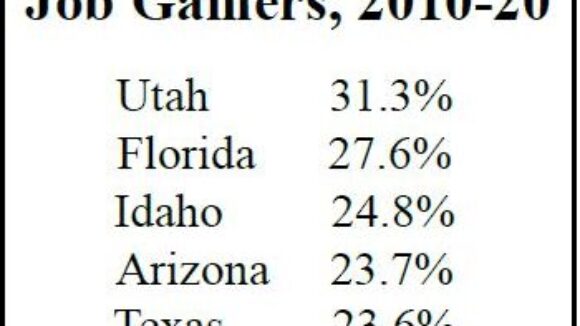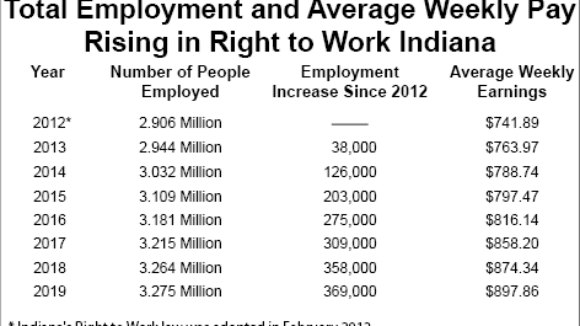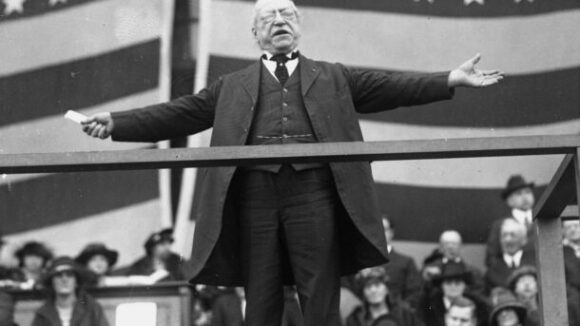Biden ‘Role Model’ States Are Stagnant
Forced-Dues States remain stagnant at 2019 employment levels, while Right to Work states saw significant job growth post-COVID-19, highlighting the benefits of worker freedom from compulsory unionism.

Forced-Dues States remain stagnant at 2019 employment levels, while Right to Work states saw significant job growth post-COVID-19, highlighting the benefits of worker freedom from compulsory unionism.

Employer demand for college-educated employees rose at a surprisingly rapid clip from 2010 to 2019, despite generally sluggish economic growth...

In the 23 remaining forced-dues states as a group, DOL data show employment is still nearly 1.5 million below what it was pre-COVID-19

Right to Work states outpaced forced-dues states in job growth by nearly 2:1 over the past decade...

In the seven years that immediately followed Indiana’s Right to Work adoption, the total number of employed Hoosiers grew every year.

“The evidence that prices are generally lower and living standards are higher in Right to Work states than in forced-unionism states is indeed compelling,”

Compulsory-Dues States Offer Fewer Opportunities For Advancement Federal data on the American workforce and employment and unemployment rates show that, even as our country’s economy experienced during the Obama presidency its most anemic recovery since the Great Depression, employer demand…

More than five years ago, Gerawan employees who wanted to be union-free collected roughly 3,000 signatures from fellow employees to get UFW union bosses ousted from their workplaces. Later came the fight to get their votes counted. Credit: Pick Justice…

Forced-Unionism States’ ‘Brain Drain’ Continues Data from the U.S. Census Bureau show that, overall, states where forced union dues are permitted are failing to offer appealing economic opportunities to retain and attract college-educated, working-age adults. (credit: REUTERS/mario anzuoini) College-Educated…